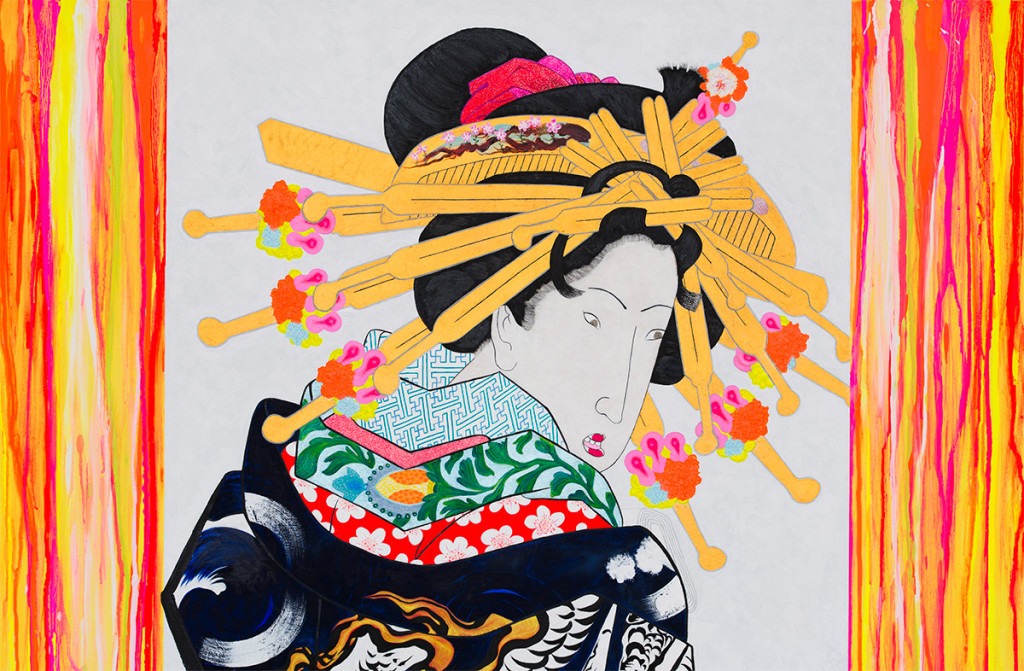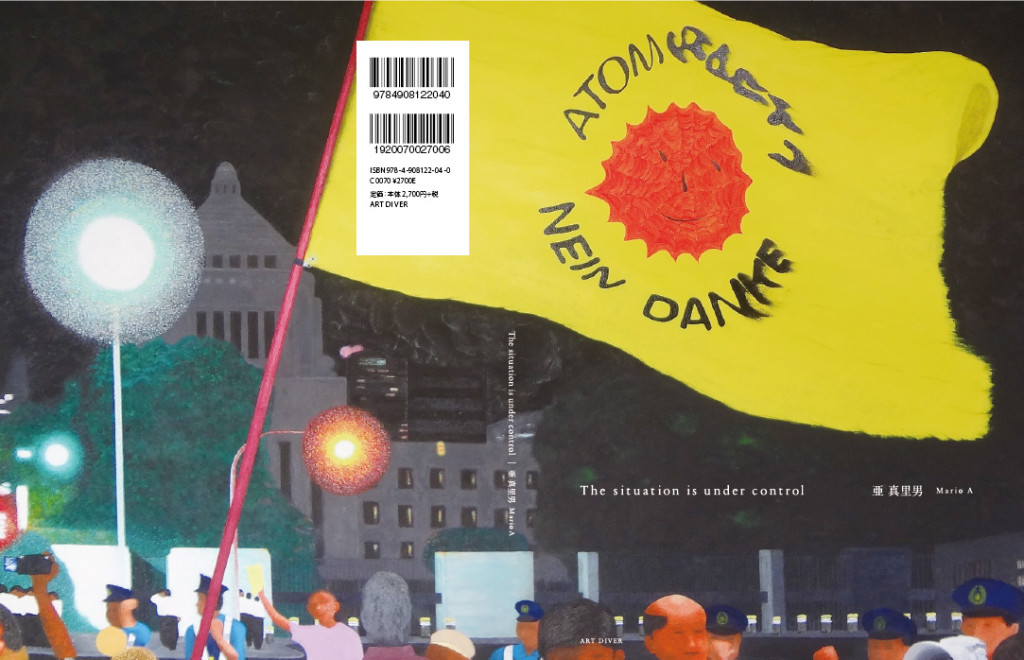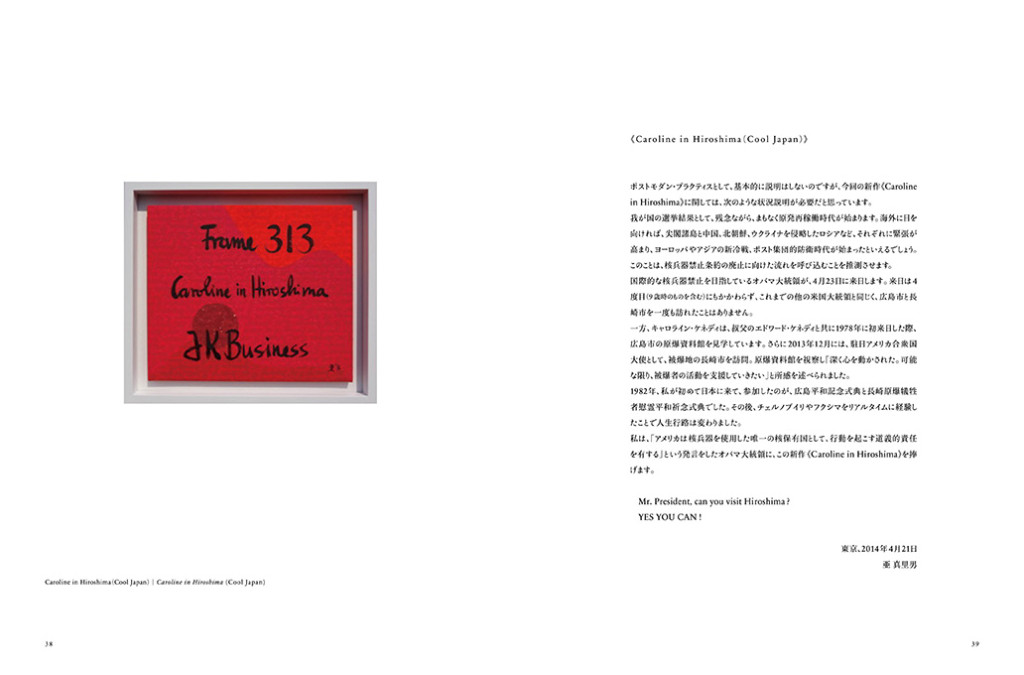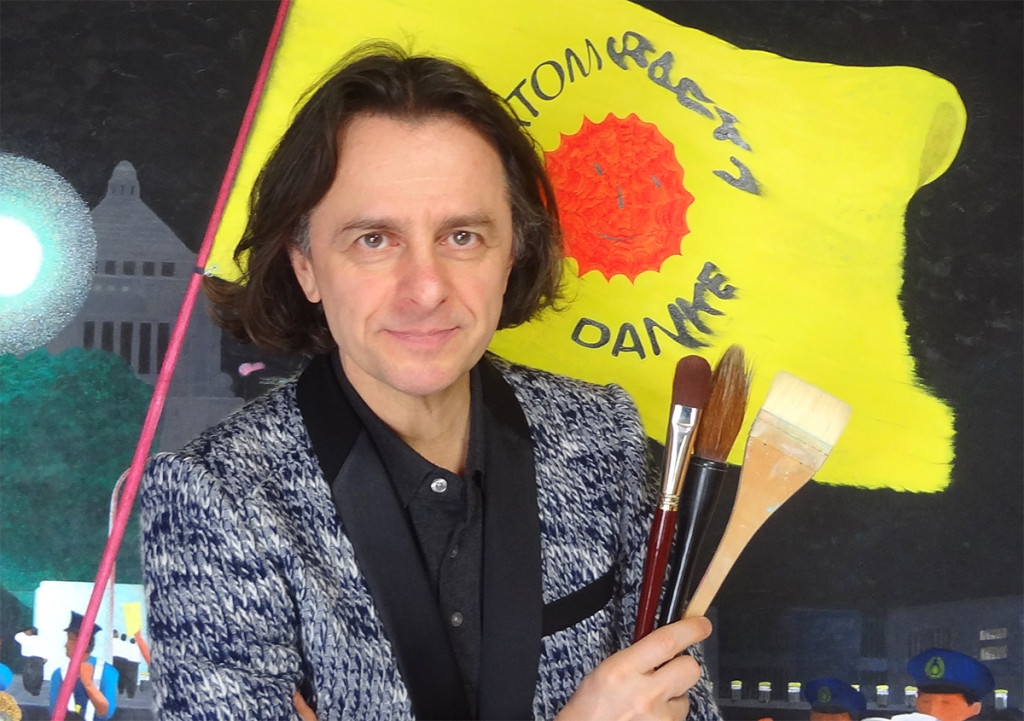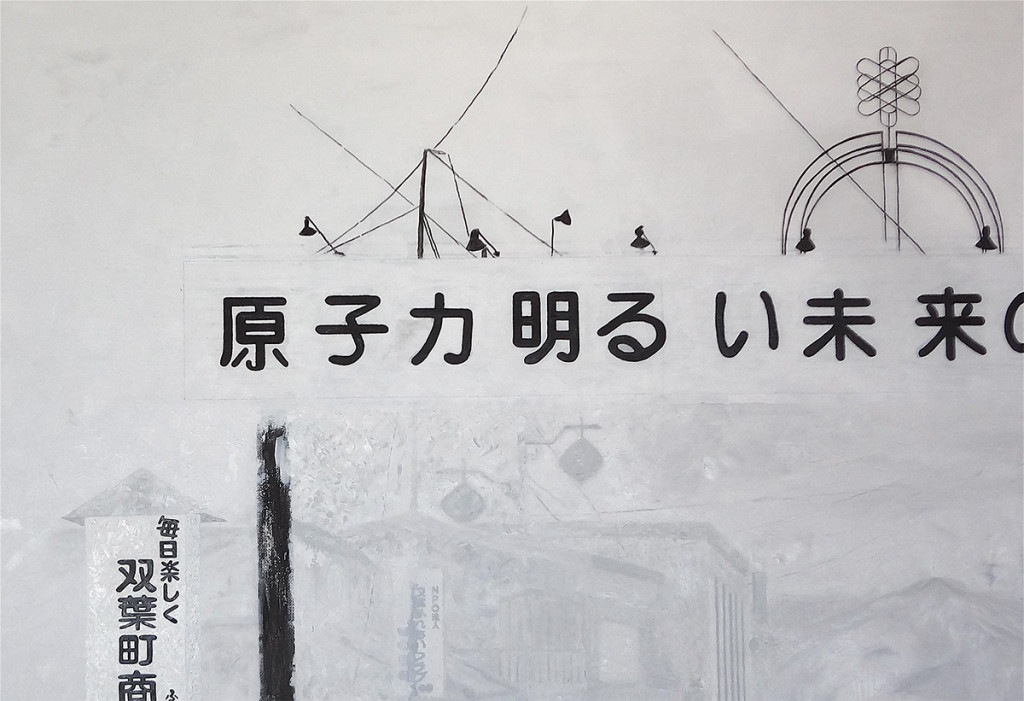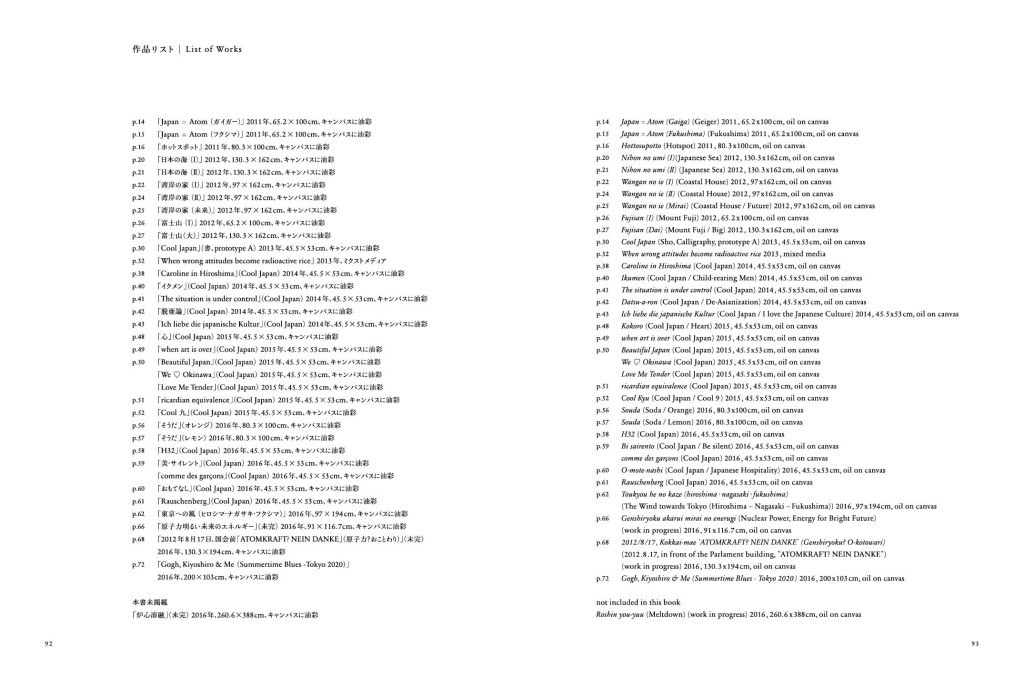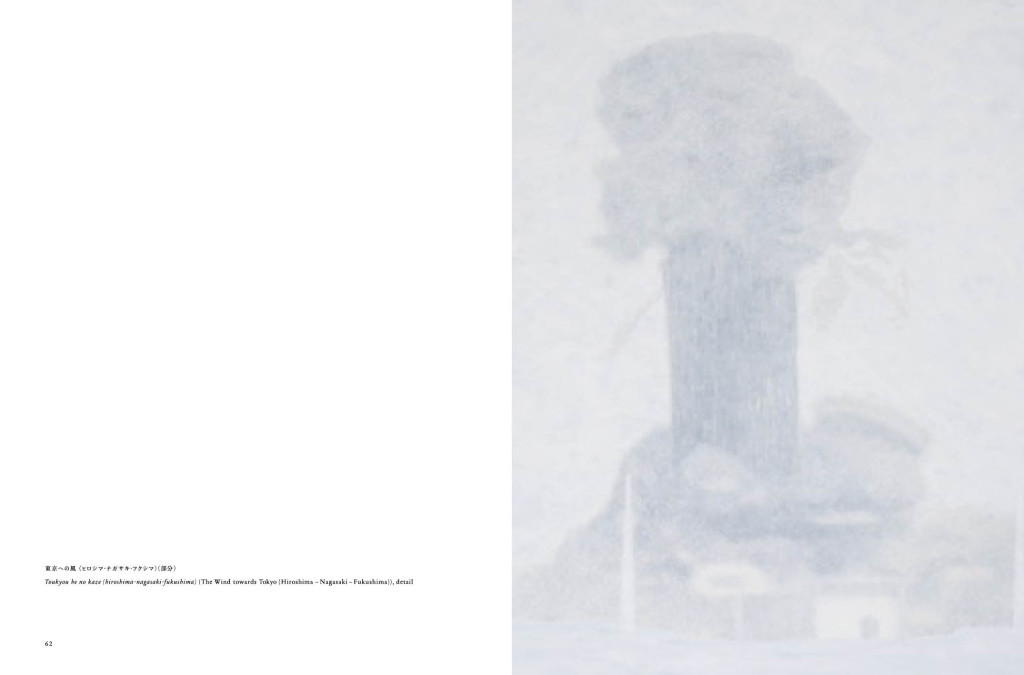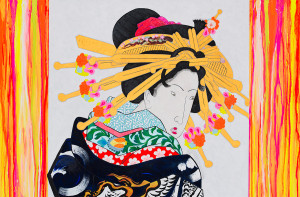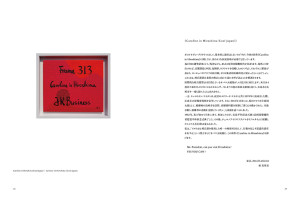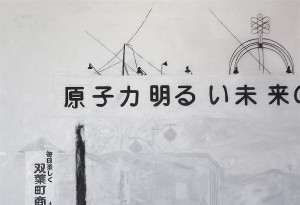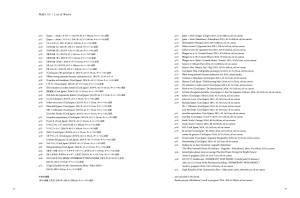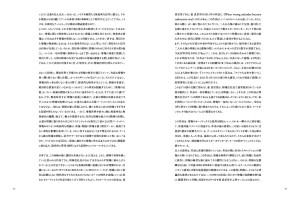Mario A "The situation is under control"
Author: Mario A
Title: “The situation is under control″
Language: in English and Japanese (bilingual)
color/black-and-white, 96P
ISBN:978-4-908122-04-0
Size:185×246mm
Hardcover
Design: Toshimasa Kimura
Critical text by Kentaro Ichihara
ISBN:978-4-908122-04-0
The situation is under control
(text by Mario A)
It was on my birthday in 2013.
At the International Olympic Committee, our Prime Minister Shinzo Abe guaranteed “the situation is under control” in regard to nuclear risks of Fukushima, Tokyo and other areas in Japan. But, how can we really believe it?
As you all know, we have been facing a constant stream of “3/11” related news continuing to thus today, and profound sorrow over the Great East Japan earthquake lies deep in our hearts. I will never forget this experience for the rest of my life.
Using various means, Japanese artists have been attempting to respond to issues exposed by the earthquake. Some have made alterations to their existing attitudes, and others have brought about paradigm shifts to what they were planning to create. Since that day, a wide variety of statements has been made public by our artists all over the country.
Considering my long career of artistic practice, I feel quite secure in declaring that my creations made from 2011 to 2016 can be perceived as highly significant, meaningful works of art.
Now, let’s look back at “Summertime Blues” released in 1988 by RC Succession, a Japanese rock band led by Kiyoshiro Imawano, and listen to its lyric: “……Your hair’s been thinning recently. But TV says, ‘Japanese nuclear power plants are safe!’ I can’t understand it, there’s no scientific fact. This must be the last summertime blues”.
In those days, I was in Germany and able to experience (the threat and consequences of) the Chernobyl catastrophe. Since then, now in 2016, 30 years of life in Tokyo have passed .
The Tokyo Organizing Committee of the Olympic and Paralympic Games has inflated the cost of Tokyo 2020 Olympic game to 1.8 trillion yen, almost six times greater than the initially stated 301.3 billion yen. The design competition of the New National Stadium required the construction cost to be around 130 billion yen, but the company that won its construction raised the estimate to over 300 million yen. Our Prime Minister jumped in the controversy to scrap the disputed deal, restarting another competition from scratch, which demonstrates how “the situation is NOT under control”.
Outstanding.
Another symbolic case is a huge project to build a high-rise building whose total cost, including the estimated land price, exceeds 1 trillion yen. As a citizen of Tokyo, I feel strong doubt about this plan for “the highest skyscraper in Japan” in front of the Tokyo station. The project is contextualized in “Grand Design of Tokyo” while its prospect seems already far beyond the actual land value. Therefore, its construction and maintenance demand an overwhelming amount of money and investments, as well as electricity, which relies on nuclear power plants outside of Tokyo. However, power consumption for this 390 meter high landmark is mostly wasteful despite its negative influence to human well-being and the environment of our earth.
I sense something deceptive when Hirotaka Sugiyama, CEO of Mitsubishi Land Estate development, proclaims “In today’s accelerating competitions among global cities, I want the name of Tokiwa-bashi (the name of the street on which the building is developed) to be the synonym of Tokyo for people all over the world”. Rather, recent situations in real estate development remind me of the same social structures and gentrification schemes that took place during the disastrous “Japanese bubble era”.
So-called “Tokyo’s philosophy for the future” had many wrong issues, intolerable to a humanistic attitude towards work-life balance, especially regarding the emancipation of the Japanese woman, the emancipation of the Japanese man, child education and the concept of family-life.
Decision makers indifferent to long-term environmental consequences influence the structure of houses and road planning in Tokyo, and developers only pursue their profit without listening to local residents. It can be said that they neglect the idea of the social contract.
However, as we are living in a time of social mobility, we consciously work less overtime, what do we really want in this age of the internet and flextime?
To advance decentralization of Tokyo, I believe we need urban planning to help people, cars, corporations and ministry offices move to other regions outside of Tokyo.
In other words, Tokyo no longer needs gigantic buildings and huge corporations to boost a driving economy. We have to notice a vicious circle that lets nuclear power plants operate again in order to maintain those huge infrastructures in the megalopolis.
As an artist in Japan, I want to do whatever I can to help this country stop relying on the nuclear power. I joined anti-nuclear demonstrations in front of the diet building as part of my artistic practices.
Reflecting on situations after March, 2011, I wonder to what extent people of our nation were aware of the dangerous “wind blowing from Fukushima towards Tokyo”, whose risks, if taken seriously, should have driven locals out of the highly-populated Kanto area to evacuate temporarily. The result of the latest elections and its voter turnout would help measure how low the risks were understood.
This year I will stop working on Japanese nuclear power issues in my “structural painting” series I have produced for the past six years. The body of works include:
“Japan = Atom (Geiger), (Fukushima), (Amakudari)” (2011)
“Hotspot” (2011)
“Japanese Sea (I), (II)” (2012)
“Coastal House (I), (II), (Future)” (2012)
“When wrong attitudes become radioactive rice” (2013)
“Cool Japan” (2013)
“The situation is under control” (2014)
“Caroline in Hiroshima” (2014)
“Ikumen [Child-rearing Men]” (2014)
“Ich liebe die japanische Kultur” (2014)
“when art is over” (2015)
“Kokoro [Heart]” (2015)
“Love Me Tender” (2015)
Further, having in mind the slogan “Tokyo – Global Cultural City” and the theme “Tokyo as a culturally attractive city to the world” in the context of the Tokyo Olympics 2020, for the year 2016 the following oil paintings, either in an affirmative or doubtful way, will have been executed:
“Meltdown”
“The Wind towards Tokyo (Hiroshima – Nagasaki – Fukushima)”
“Genshiryoku Akarui Mirai No Energy” (in English: “Nuclear Power, Energy For A Bright Future”)
“2012.8.17, in front of the Parliament Building, “ATOMKRAFT? NEIN DANKE” ”
“Gogh, Kiyoshiro & Me (Summertime Blues – Tokyo 2020)” in a unique Japonism style.
In the context of Japanese art history, how should we examine Mario A’s paintings?
Visitors to this exhibition will see how our country’s art culture in Tokyo has progressed. I also hope all of you visiting my exhibition will try taking action across diverse fields. I would really appreciate it if you could take your time for multi-layered consideration on possibilities of building a more humanistic society and better environments in our creative and charming Tokyo, to contribute to our nation’s very lives.
Mario A profile
Japanese Artist
Born 1959 in Baden, Switzerland. Discontinued studies at Berlin Art University (former HdK). Obtained Master of Arts at Free University of Berlin. Has worked and lived in Japan since the mid 1980s. Mario A became the first so-called “Japanese” artist with non-Asian heritage in the history of Japanese contemporary art. Widely recognized as the most challenging and provocative artist of his generation in Japan.
His works are part of institutional and private collections in Belgium, France, Germany, Great Britain, Italy, Japan, Mexico, The Netherlands, Spain, South Korea, Switzerland and the U.S.A. Nominated for the ‘Paris Photo’ art fair jury prize 2006. Exhibitions held in the Museum of Contemporary Art, Tokyo, Academy of the Arts, Berlin, Rietberg Museum, Zürich, Museum of Modern Arts, Amstelveen, all important art fairs.
Moved from Mizuma Art Gallery to Aoyama Meguro Office (Hideki Aoyama). Currently directed exhibitions by Hideki Aoyama through Aozora Mimi: Solo shows at the Art Fair Tokyo (May 2016) and “The situation is under control” (September 2016).
Latest exhibitions: Art Fair Tokyo (Solo Show) 2012, ING Collection „If walls could speak“ 2013 (Amsterdam), Sprout curation „SOMANYIMAGES“ 2013 (Tokyo), Esther Woerdehoff Tokyo Photo 2013, Esther Woerdehoff, „Drive In“(Paris/Ljubljana) 2014 – Represented by AOYAMA MEGURO OFFICE (Tokyo), Esther Woerdehoff Gallery (Paris), Elaine Levy Projects (Bruxelles)
Selected monographs: “F THE GEISHA” (1999, text by Yoko Tawada), “ma poupée japonaise” (2001, text by Masahiko Shimada), “Mario A: Japanese Artist” (2004, critique by Kentaro Ichihara), “The World Is Beautiful” (2006), “The situation is under control” (2016, critique by Kentaro Ichihara)
Japan’s most popular contemporary art blogger, website: http://www.art-it.asia/u/sfztpm/
Artist’s website: http://marioa.com

